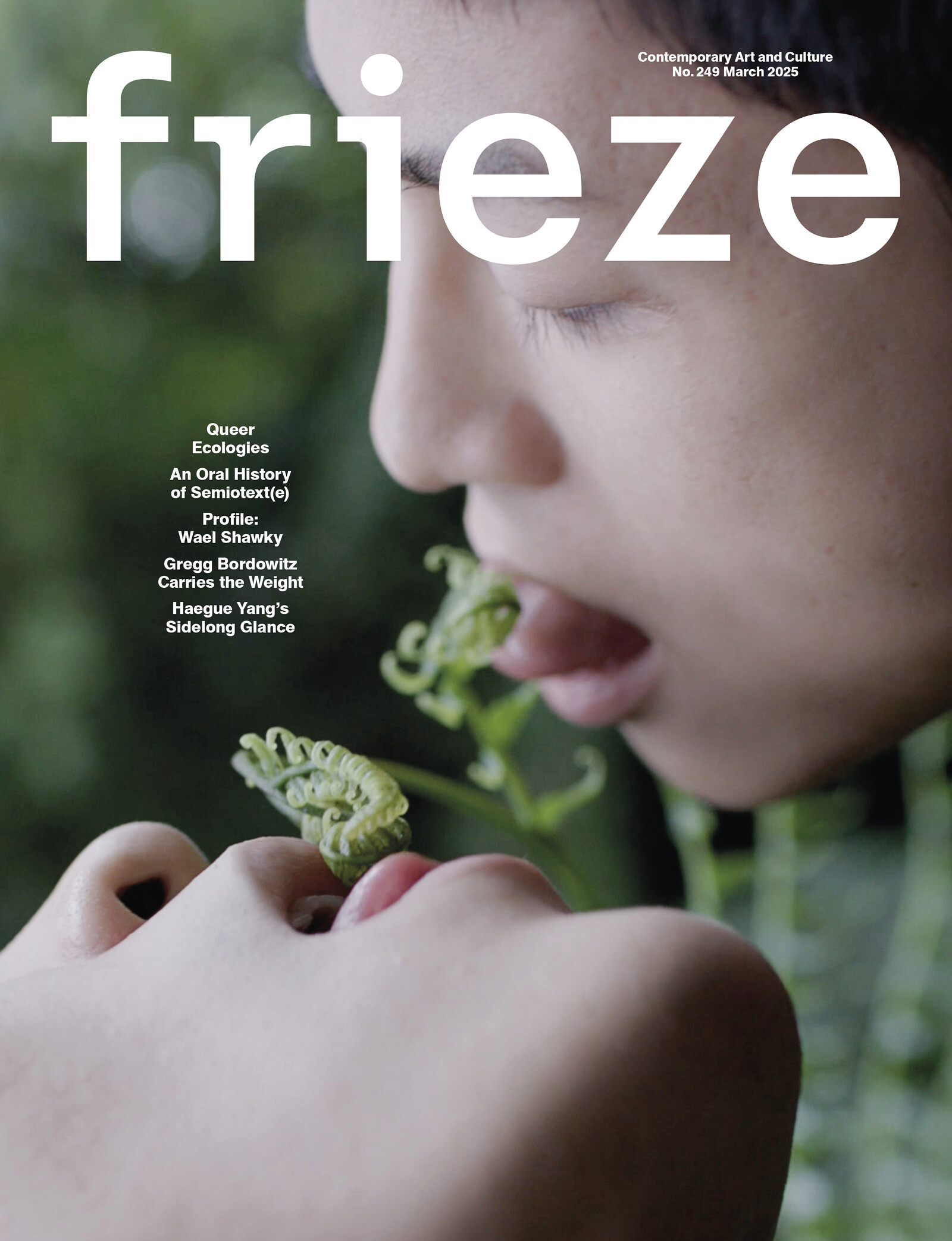“We have the means, now more than ever, to be experimental.” —Hedi El Kholti
The March issue of frieze magazine is dedicated to artists and writers living and working in Los Angeles. Rahel Aima profiles artist Wael Shawky ahead of the US premiere of his film installation Drama 1882 at The Museum of Contemporary Art. Plus, a selection of writers, editors and artists contribute to an oral history on Semiotext(e), tracing how the publisher bridges avant-garde literature, radical philosophy and underground culture.
Profile: Wael Shawky
“I’m fascinated with the idea of translating societies that are moving from one system to another.” Rahel Aima speaks with the artist about his childhood in Makkah and his cinematic portrayals of the Crusades, examining the ways in which his work challenges the construction of history.
Oral History: Semiotext(e)
“The press continues to be forged by community.” François Cusset, Hedi El Kholti, Veronica Gonzalez Peña, Bruce Hainley, Wayne Koestenbaum, Chris Kraus, Lauren Mackler, Eileen Myles, Christine Pichini, Lynne Tillman, McKenzie Wark and Noura Wedell reflect on the legacy of Semiotext(e). From its roots in the New York art and theory scene of the 1970s to its transformative impact on global intellectual discourse, the independent publisher continues to defy literary boundaries.
Also featuring
Gregg Bordowitz speaks to Jeremy Lybarger about using poetry to navigate identity and grief on the occasion of his exhibition at Camden Arts Centre, London, and his show at The Brick in Los Angeles. Assistant editor Cassie Packard pens a thematic essay on feminism and queer ecology’s relationship to intimacy. In “1,500 Words,” curator Bilal Akkouche details a recent trip to Algiers, highlighting art’s capacity for resistance.
Columns: Object Lessons
Brian Dillon profiles Haegue Yang, exploring her interest in the particularities and repetitions of household goods, Caitlin Chaisson highlights Maria Hupfield’s transformative felt sculptures, Chrissie Iles traces how Dala Nasser’s Cyanotypes capture the dismantlement of site into memory, Carson Chan writes about Michael Reynolds’s innovative buildings composed of beer can bricks, Simon Wu outlines Gala Porras-Kim’s process of artefact rematriation.
Finally, senior editor Terence Trouillot responds to David Hammons’s print Injustice Case (1970) ahead of the artist’s show at Hauser & Wirth, Los Angeles. Plus, Hedi El Kholti contributes to our series of artists’ “to-do” lists and senior editor Marko Gluhaich pens a postcard from Chicago.
